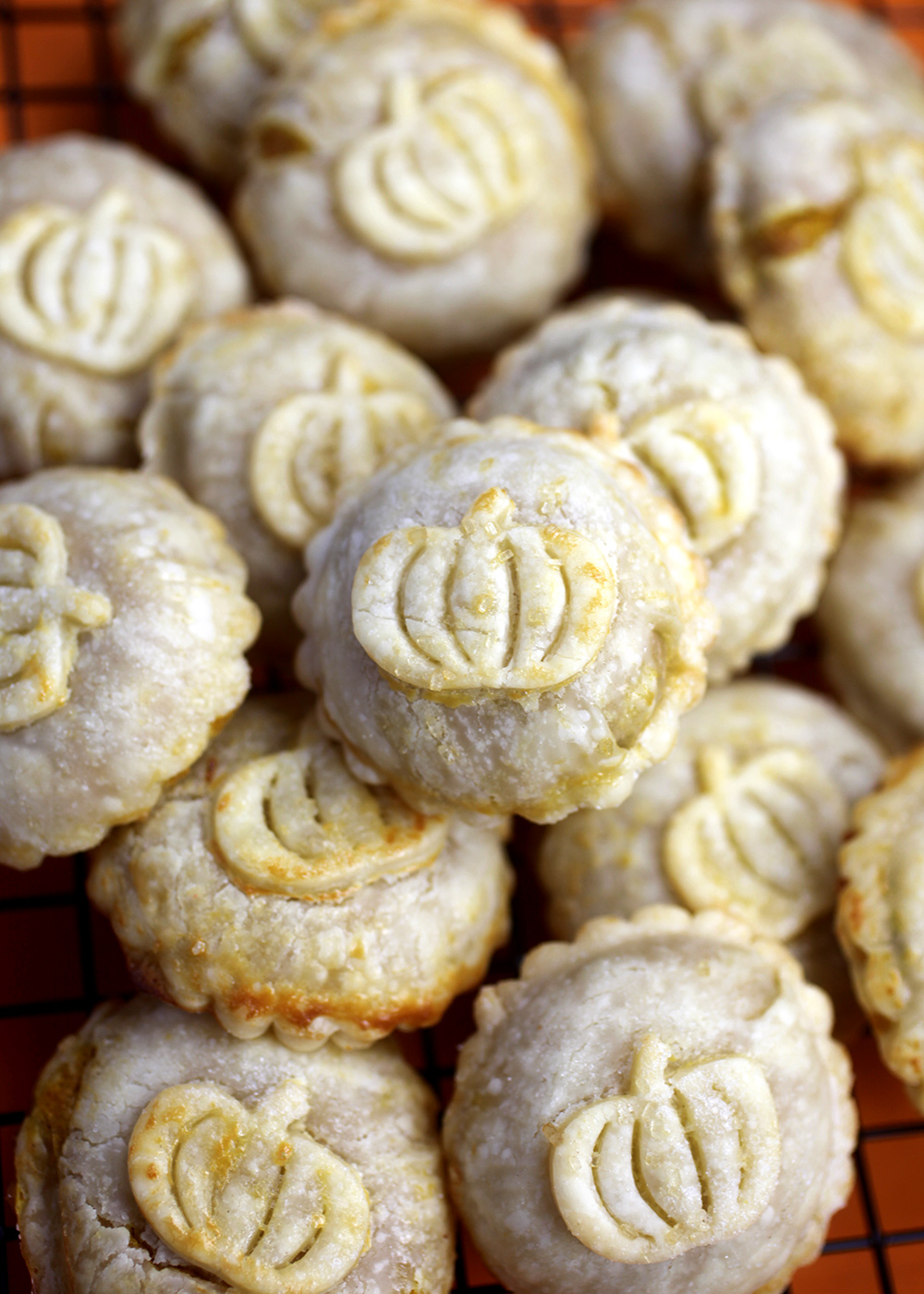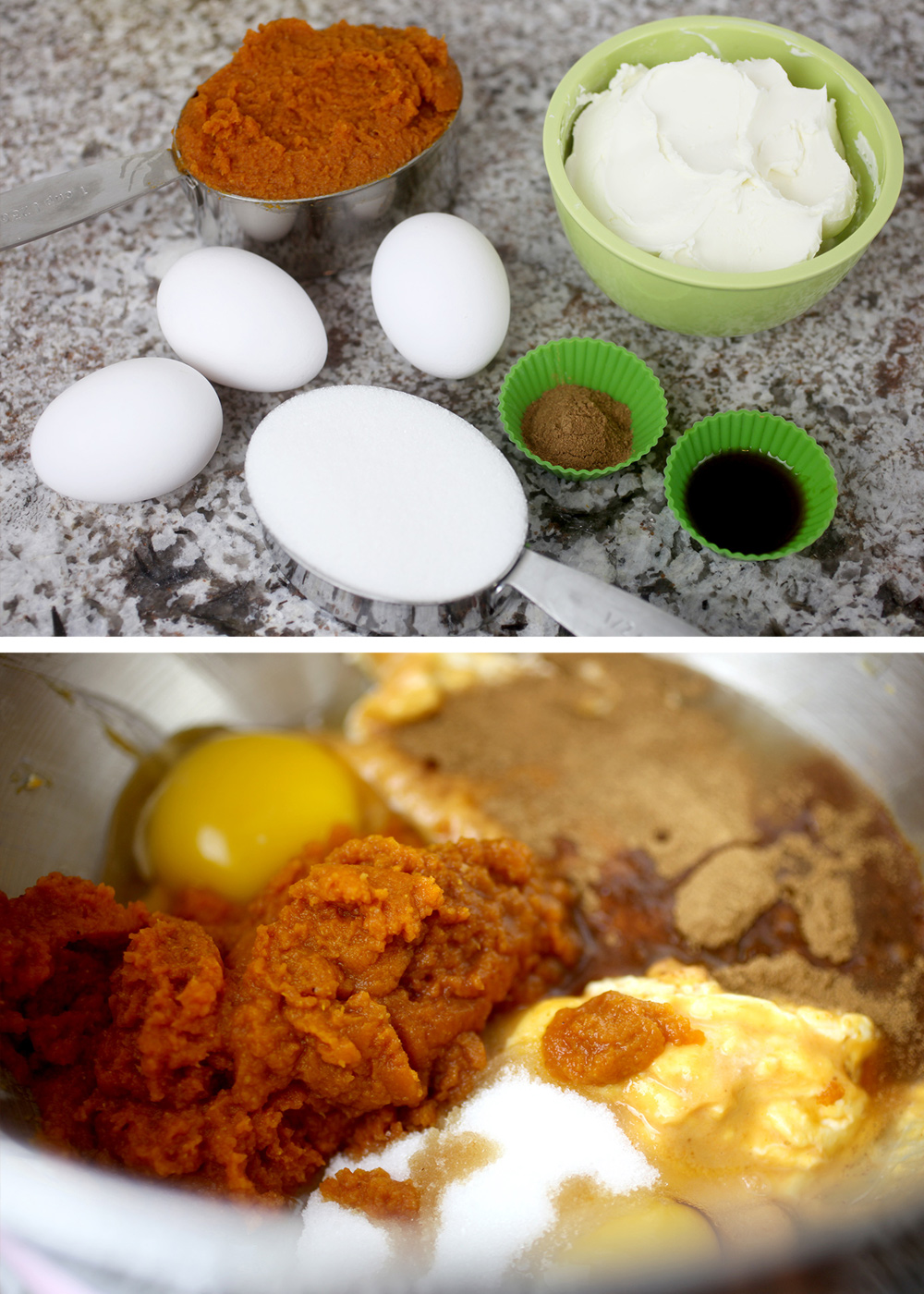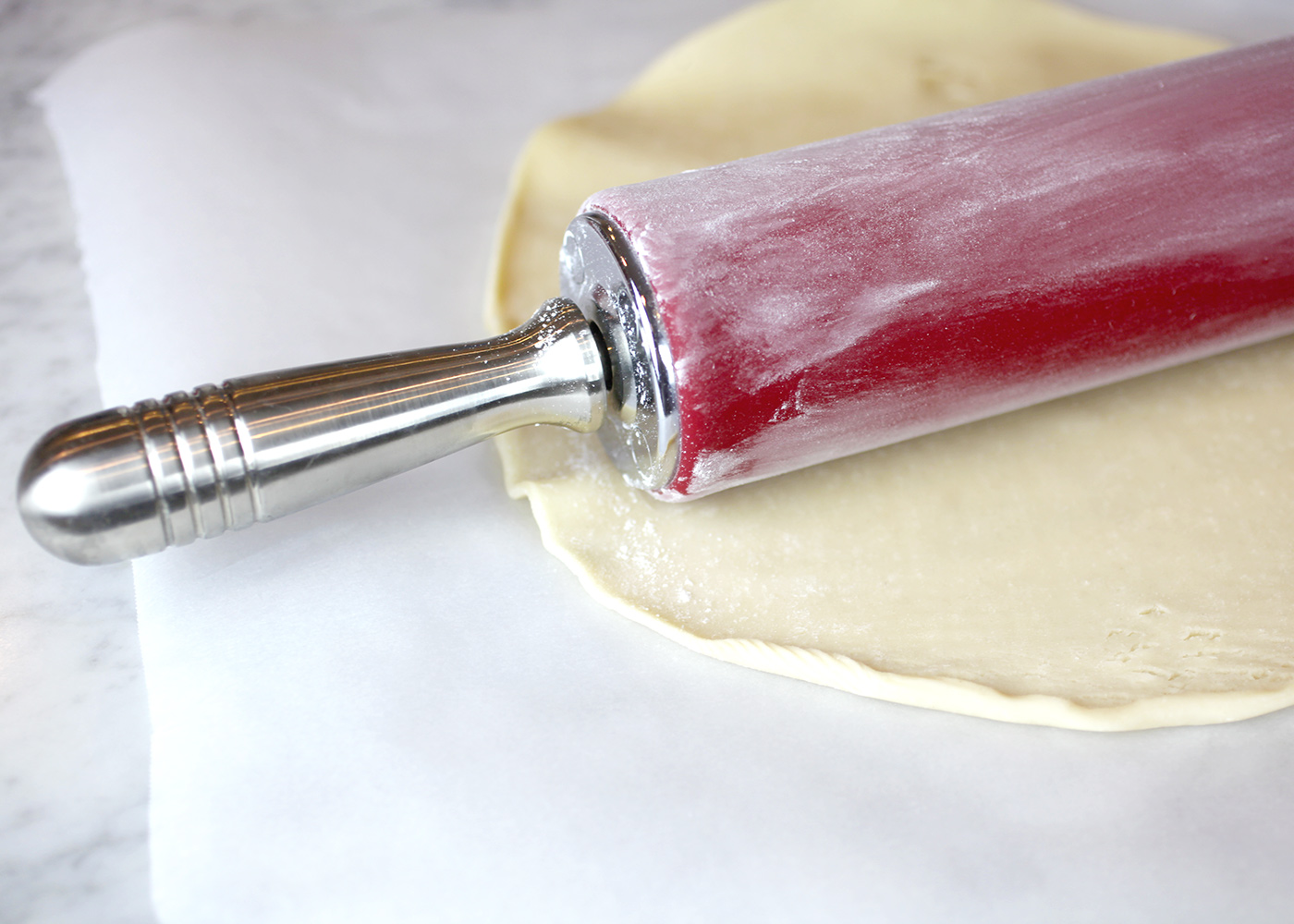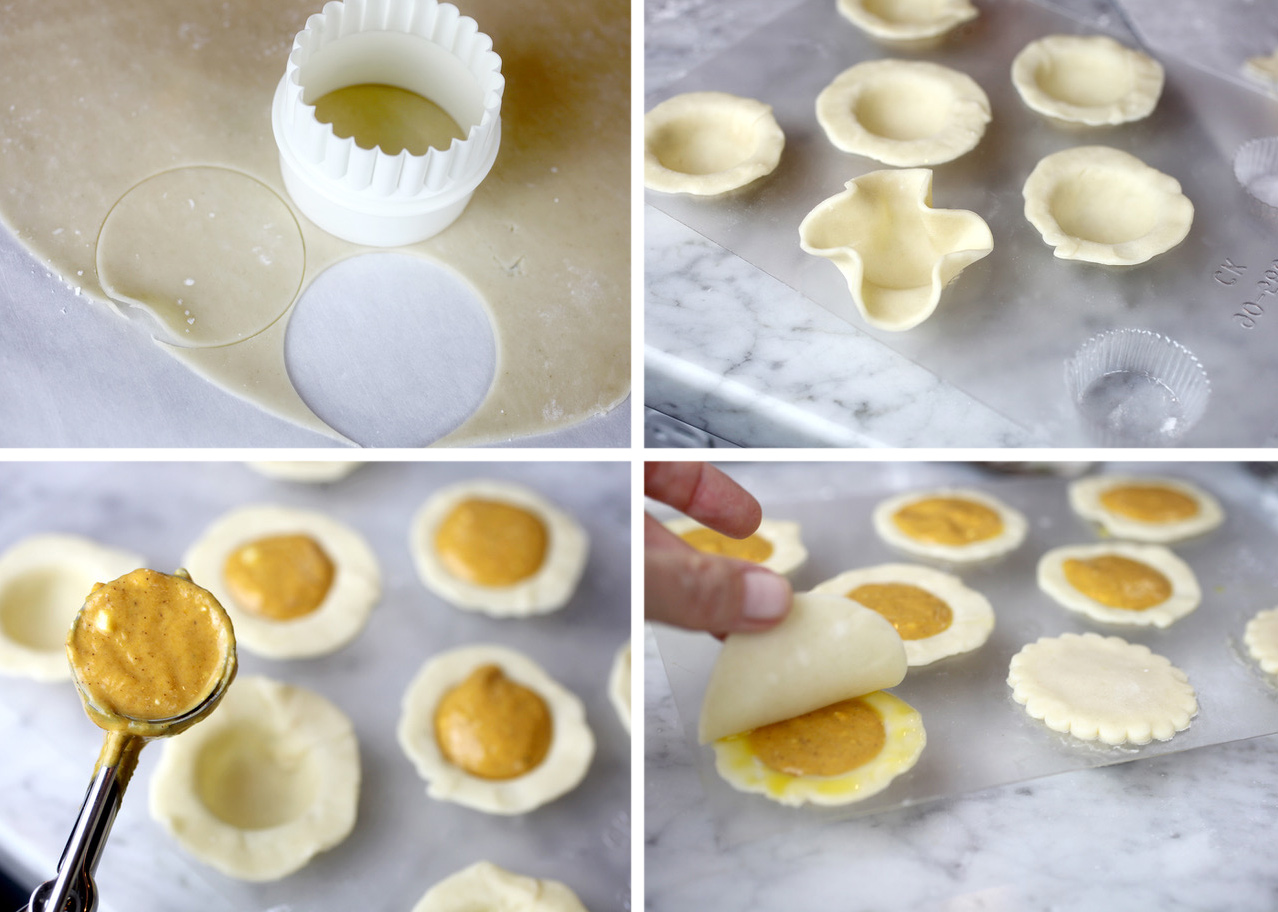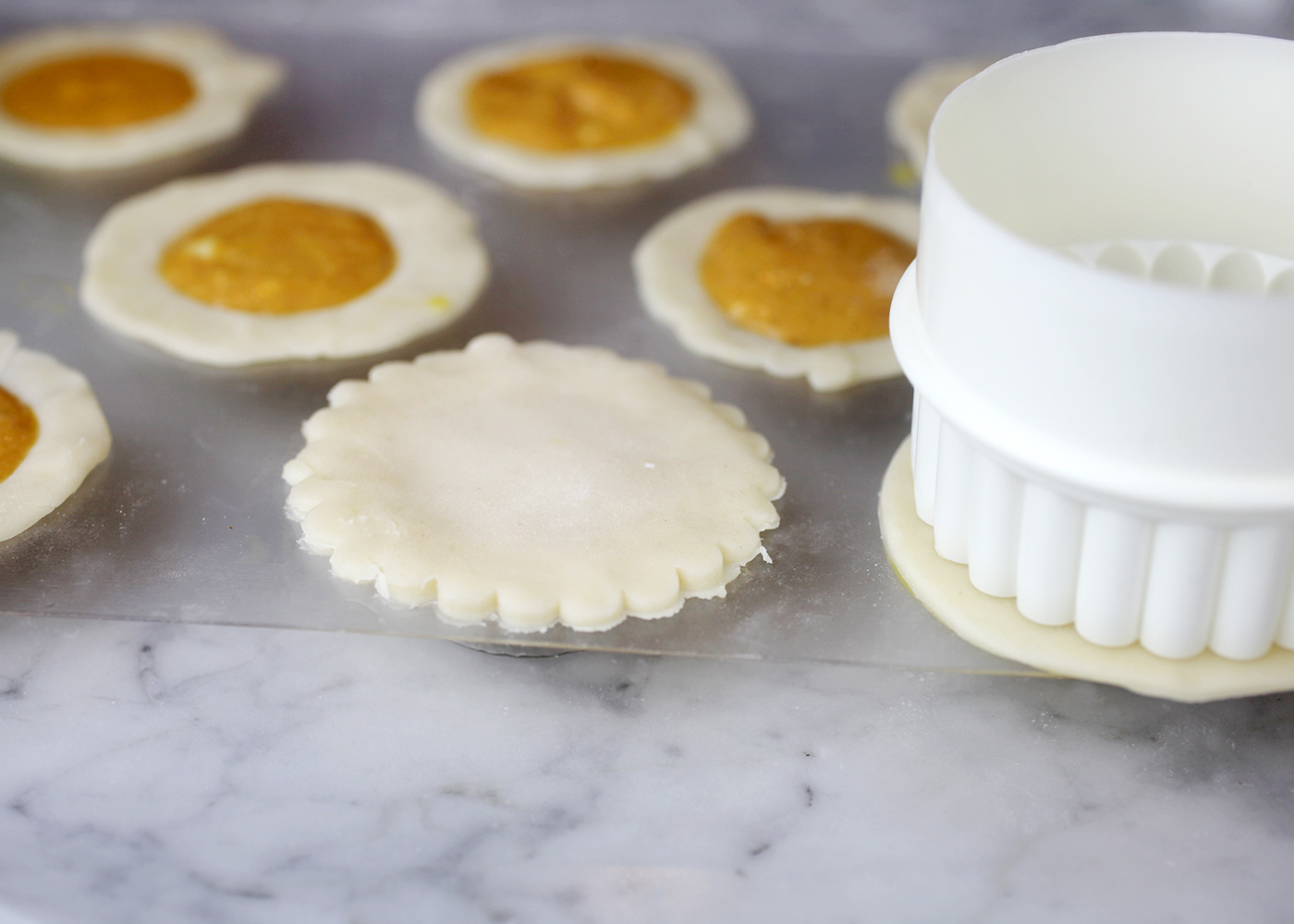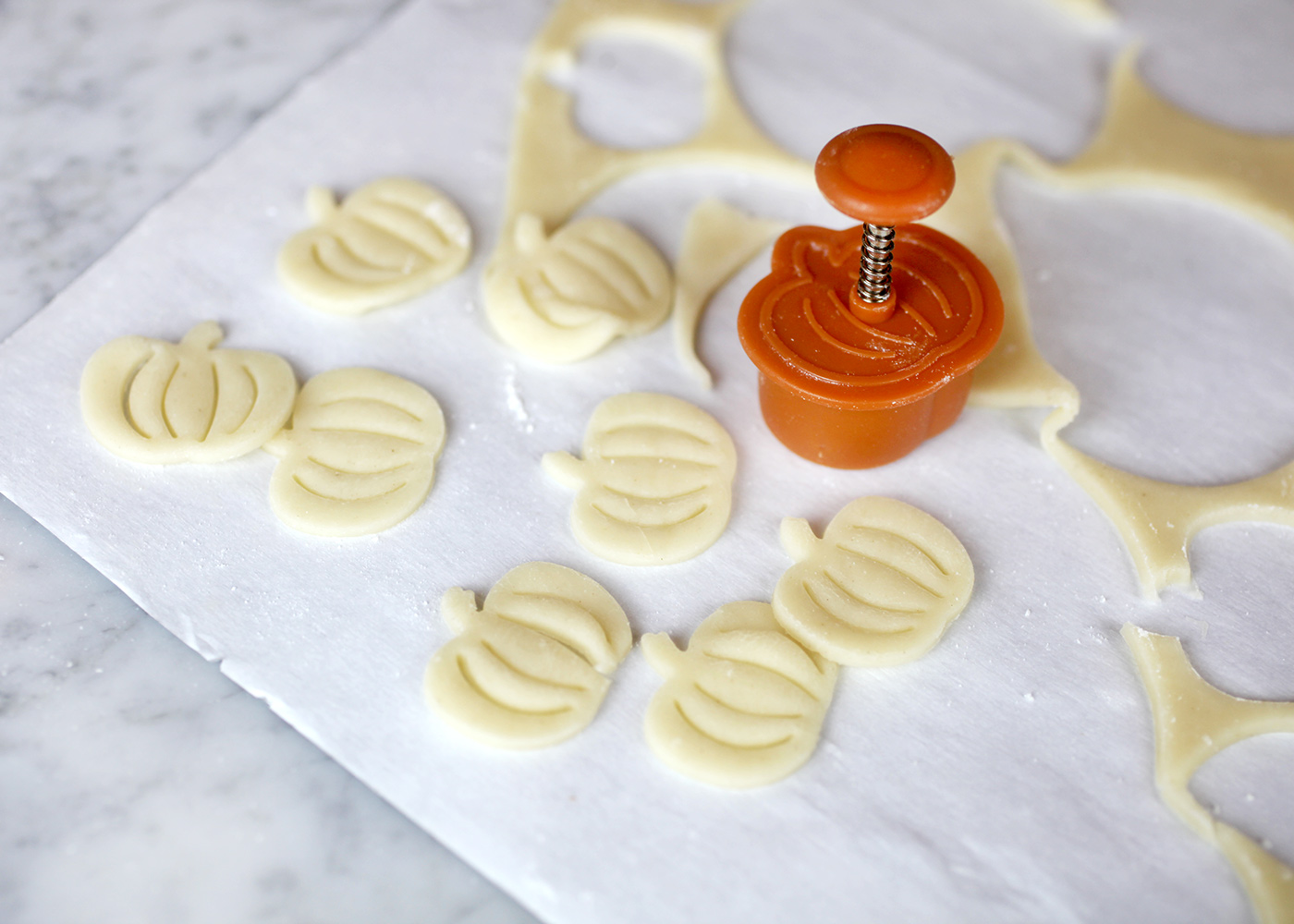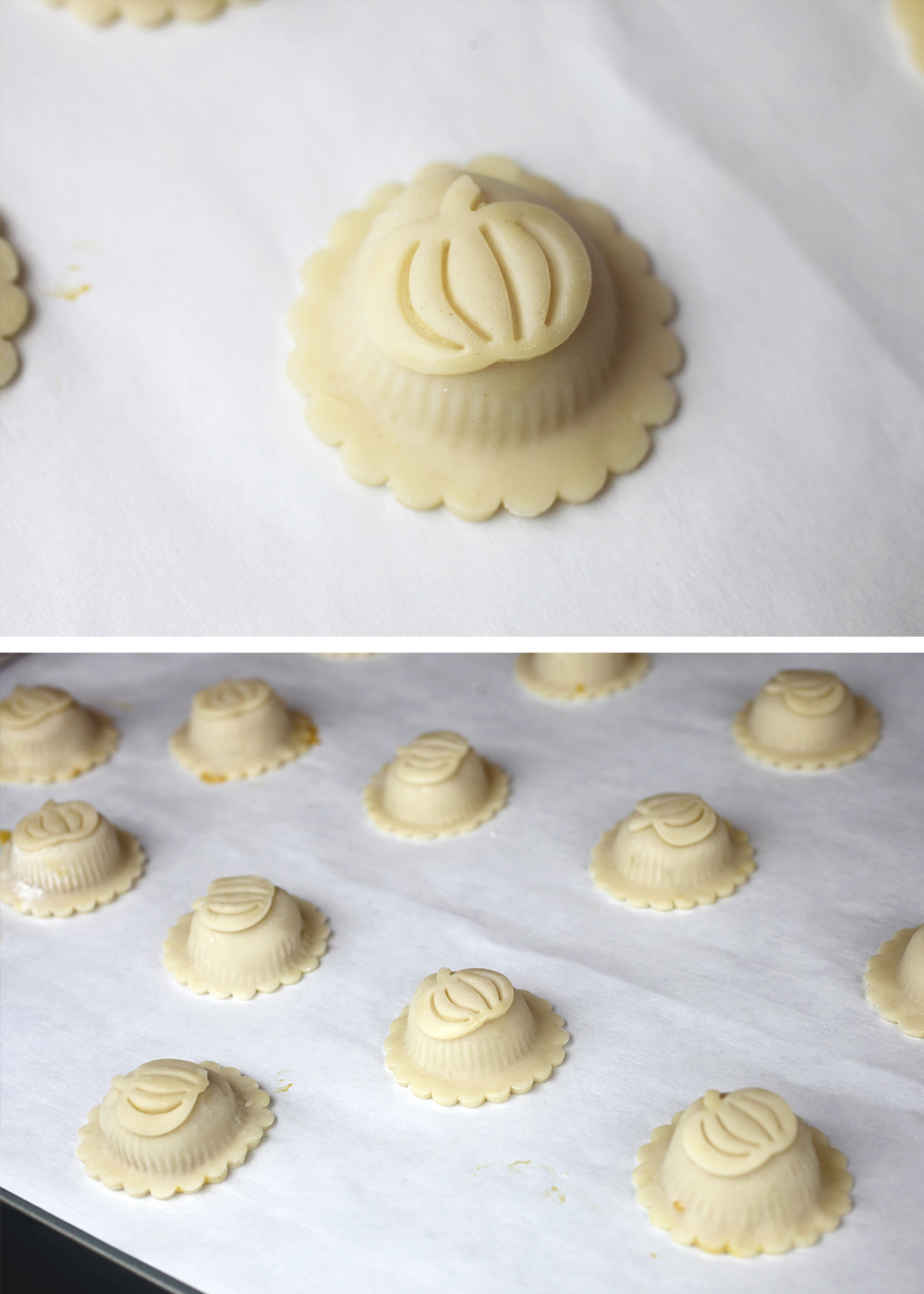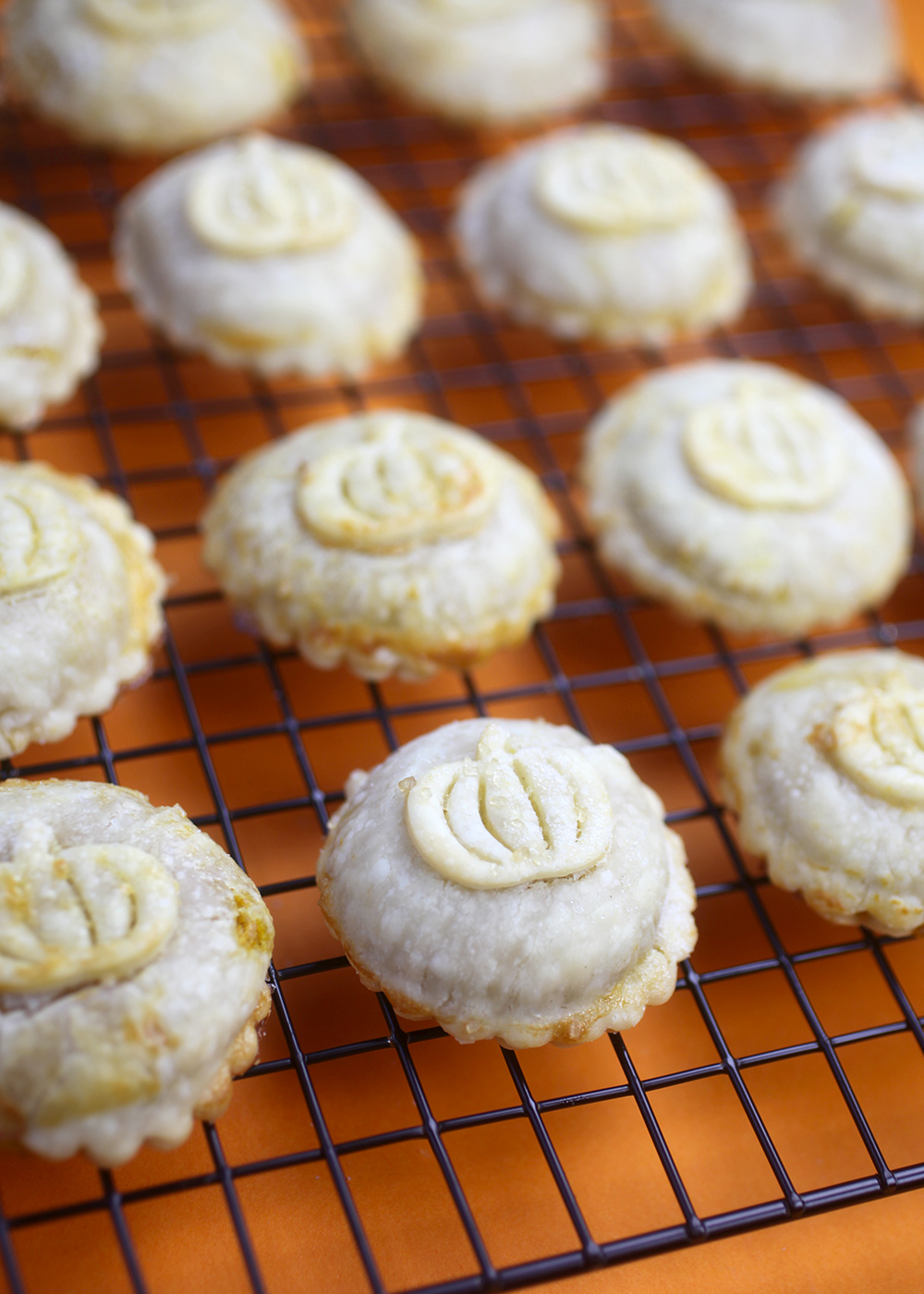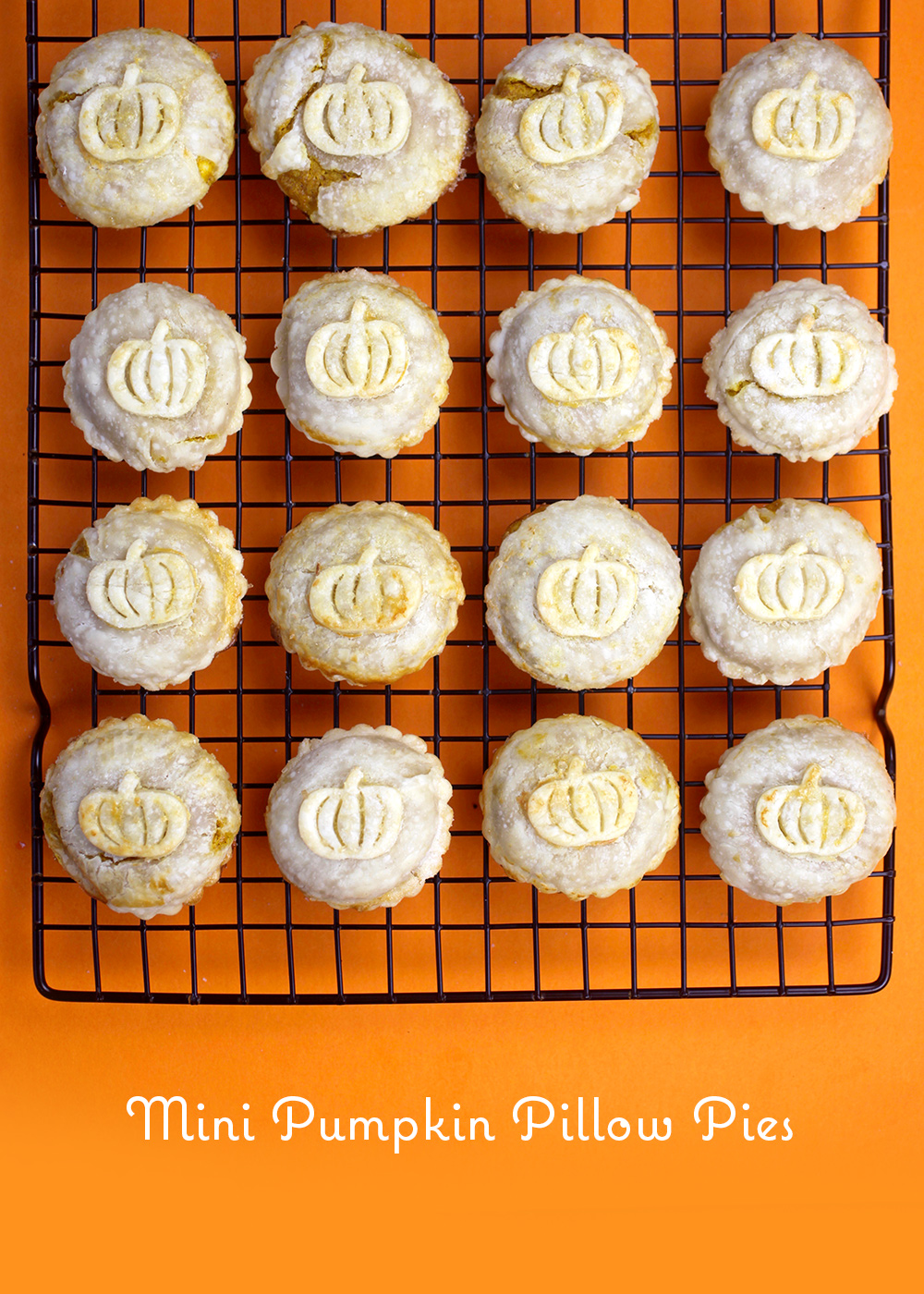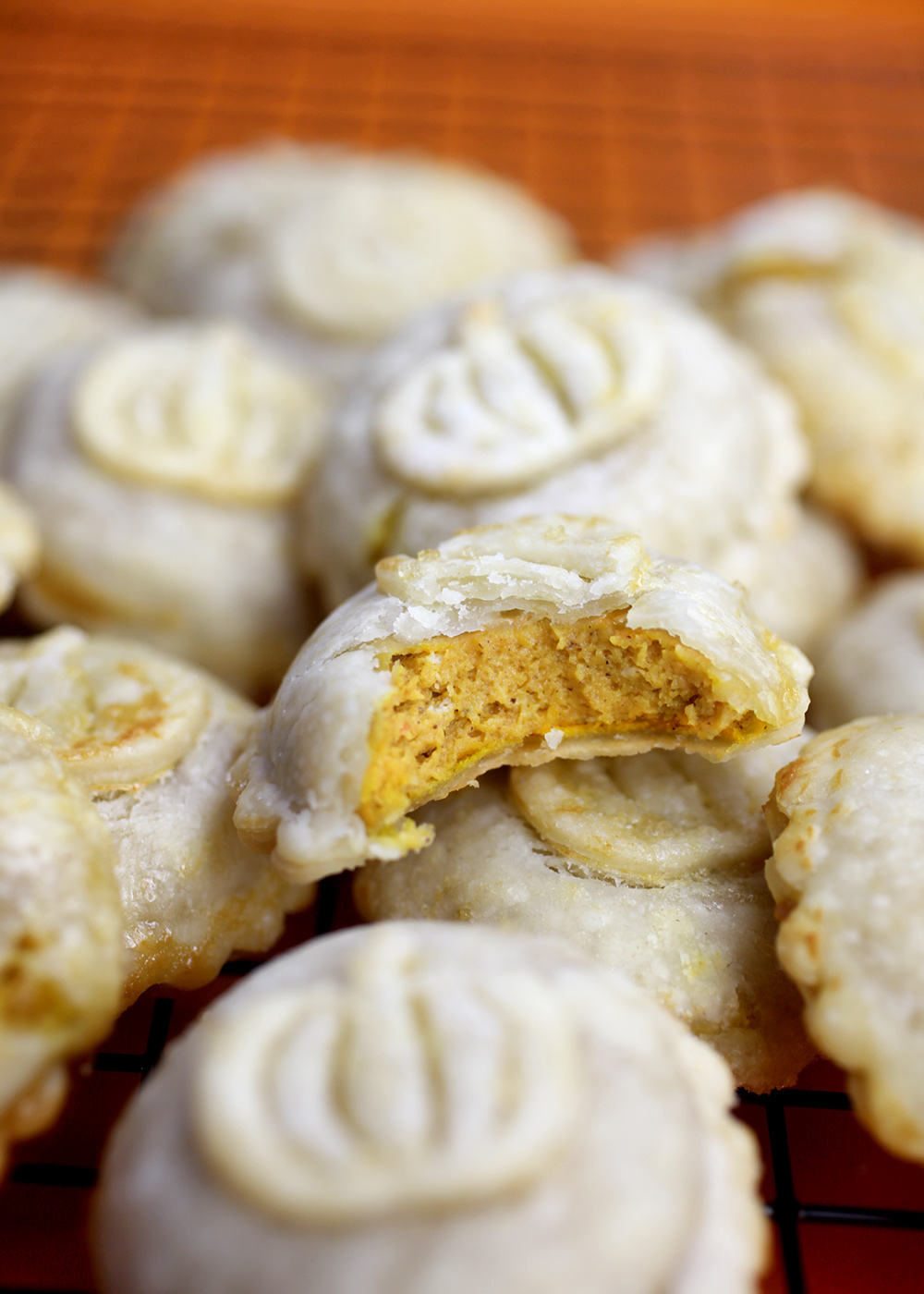from Dai Manuel: Your Lifestyle Mentor https://ift.tt/2RlosLS
Friday, November 30, 2018
5 Ways You Can Make Your Lifestyle Perfect
from Dai Manuel: Your Lifestyle Mentor https://ift.tt/2RlosLS
Thursday, November 29, 2018
10 Easy Quinoa Recipes
Check out our favorite delicious and easy quinoa recipes, from enchiladas to quinoa salad recipes to vegan chili. You’re sure to find a favorite!

In just a few years, quinoa has become a majorly popular food. When Alex and I first started A Couple Cooks eight years ago, quinoa was relatively new. This supergrain is now a staple in our weekly meals, and it’s super delicious too. Over the years we’ve created all sorts of quinoa recipes. So we thought we’d share our top 10 easy quinoa recipes with you! All these quinoa recipes have become family favorites in our house, and we hope they will in yours too!
Quinoa (KEEN-wah) is one of the world’s most perfect foods (according to some) due to its high nutritional content. It’s actually a seed, not a grain, which makes it naturally gluten free. Compared to other vegetables, quinoa is high in protein, calcium, Vitamin B, and iron. Fun fact: apparently the Incas thought it was sacred, because eating it regularly appeared to provide a long, healthy life. Because of all these benefits, we love making quinoa recipes!
How to cook quinoa
There are a few ways to cook quinoa. Over the years, Alex and I have messed up quinoa numerous times: cooking it too fast so it’s hard and crunchy, or overcooking it so it’s mushy. I will say, how to cook quinoa is not a simple matter! We have two methods we like to use to cook quinoa:
- Perfect Quinoa on the Stovetop This is our master recipe for cooking quinoa on the stovetop. It takes about 25 to 30 minutes, and it requires a little baby sitting to make sure the liquid is cooking out evenly, but it’s mostly hands off.
- Instant Pot Quinoa (Pressure Cooker) Instant PotIf you have a pressure cooker, you can use it to make quinoa! It takes about 16 minutes and is almost totally hands off! This is the method we’ve started to use more often, since we have an Instant Pot.
And now…our top 10 easy quinoa recipes!
Veggie Packed Quinoa Fried Rice

First up in our list of easy quinoa recipes, this quinoa fried rice! This unique take on fried rice is made with quinoa instead of rice, and packed with baby greens: spinach, chard and kale. Alex and I make quinoa fried rice without a recipe all the time as an easy weeknight meal. Once you make this recipe a few times, you can get the hang of it and customize to use up the veggies in your fridge. This is one of our top favorite quinoa recipes: and especially for using up leftovers, since it’s made with cold quinoa!
Tropical Mango Quinoa Bowls

Next in our list is one of our favorite vegan quinoa recipes: these tropical mango bowls! They take just 30 minutes to make and are full of zesty flavor. The quinoa bowls include fresh mango, red pepper, red cabbage, avocado, fresh greens, cilantro and cashews. It’s topped off with a vegan cashew citrus drizzle, a combination of cashews, orange and lime juice, and fresh ginger. It’s so, so good and tastes like it took hours to put together! It’s a quinoa salad recipe that doubles as a main dish.
Feta and Quinoa Stuffed Peppers

This quinoa stuffed peppers recipe is a colorful and delicious healthy dinner, full of Mediterranean flavors like lemon, parsley and feta. Roasting peppers is quite easy: it takes just 30 minutes and you can do it while preparing the remainder of the recipe. To make the quinoa filling, saute shallot and garlic, then add the quinoa, chopped pistachios, parsley, paprika, oregano and lemon. Then stuff the filling into the peppers and sprinkle everything with a healthy dose of feta cheese.
Tip: To make this a vegan quinoa recipe, omit the feta.
Quinoa Black Bean Vegan Chili

Another one of our vegan quinoa recipes, this quinoa black bean vegan chili is a fan favorite! This savory, hearty quinoa vegan chili is packed with protein. It’s simple and flavorful, light on the chili powder so the other flavors can shine. The secret ingredients are a bit of adobo sauce from a can of chipotle chili peppers in adobo (available at most groceries in the ethnic foods aisle), and a bit of white wine vinegar stirred in at the end for some brightness. It’s gotten rave reviews for years!
Artichoke & Quinoa Vegetarian Enchiladas

These delicious vegetarian enchiladas are stuffed with artichokes and quinoa! They’re a filling vegetarian recipe that’s perfect for feeding a crowd. When Alex first tried this quinoa recipe, he said the meatiness of the filling reminded him of chicken — which is big praise for a recipe that has no meat. Oh and they also look gorgeous! Topped with thinly sliced red onion rings, the lovely purple circles contrast against the bright Monterrey jack cheese, fresh cilantro, and crumbled queso fresco.
Tip: To make this an easy quinoa recipe, use storebought salsa verde instead of making your own.
Mediterranean Quinoa Salad Bowl

Another favorite quinoa recipe, our Mediterranean Quinoa Salad Bowl features greens, feta cheese, kalamata olives and a quinoa tomato sofrito blend. It’s a copycat of a delicious Panera quinoa salad we made for a reader request! Sofrito is a sauce used as a base in Spanish, Italian, Portuguese, and Latin American cooking. Typically in Spanish cuisine, it’s garlic, onion, paprika, and tomatoes cooked in olive oil. The sofrito is mixed with cooked quinoa to become the quinoa tomato sofrito blend, which adds an almost meaty texture. It’s another quinoa salad recipe that doubles as main dish.
Tip: To make this a vegan quinoa recipe, omit the feta cheese.
Vegetarian Bibimbap Bowl with Quinoa

This easy quinoa recipe uses quinoa instead of rice in the traditional bibimbap dish! Bibimbap is a Korean rice bowl full of pickled vegetables, savory sauce, and a runny egg, all stirred together into delicious savory goodness. This quinoa bowl is an interpretation of the original flavors, using green beans, quick pickled carrots and radishes, and topping it all off with a sauce made with gochujang, Korean chili paste! It’s so, so flavorful.
Veggie Quinoa Burgers

This easy quinoa recipe takes a bit of time to put together, but it’s totally worth it! These flavorful quinoa burgers are easy to make and keep well in the fridge for several days. You can eat them with a bun, or place them on a bed of greens for a gluten free option. Top with hummus and avocado and dig in!
Stress Relieving Avocado Quinoa Salad Bowl

Another in our list of vegan quinoa recipes, this avocado quinoa salad is a delicious and hearty bowl full of stress relieving foods! It’s drizzled with a zesty cocoa vinaigrette. Each one of the foods in this avocado quinoa salad helps to replenish nutrients in times of stress! This nutritious bowl includes avocado, raw cacao, almonds, citrus, cauliflower, and greens. And not only is it nutritious: it’s delicious too!
Go Green Bowls with Lemon Yogurt Sauce

Our final in the list of easy quinoa recipes, these Go Green bowls are surprisingly filling and satisfying! The bowl is filled with quinoa, brocolli, kale, and fresh greens. If you can find it, brocolini is a fun addition with its elegant, long stems. And just about anything tastes good when smothered in this lemon yogurt sauce! We wanted to create a savory, creamy delicious yogurt sauce that would work on just about anything: roasted vegetables, salads, and grain bowls. Alex had the idea of broiling lemon peel and garlic before blending them into the yogurt sauce. It makes the flavor pop in a way that’s indescribable!
Tip: To make this a vegan quinoa recipe, use our Best Lemon Tahini Sauce.
A Couple Cooks - Recipes for Healthy & Whole Living
from A Couple Cooks https://ift.tt/2BEJXSb
Why Debate May Be the Best Way to Save Constructive Disagreement
Julia Dhar claims: “My mission in life is to help people disagree productively, to find ways to bring truth to light, to bring ideas to life.” And as a former debate star, she thinks the skills she learned debating could be the key to help everyone find some common ground.
In her TED Talk, Dhar describes how in debate it doesn’t make sense to attack the opponent personally because that person did not choose to argue for one side or another — it’s determined randomly. The only way to win in a debate is to discuss the ideas clearly and impersonally. It’s reminiscent of a saying at some education conferences: “be tough on the ideas, soft on the person.”
“People who disagree the most productively start by finding common ground, no matter how narrow it is. They identify the thing we all agree on and go from there….what they’re doing is inviting us into a shared reality,” Dhar said. The conflict is still there, but the shared reality gives people a place to talk about it. She thinks people could be using formal debate structure to productively disagree at every level — over the dinner table, at staff meetings, on TV.
“It might sound impossible or naive to imagine that you could ever take that notion outside of the high school auditorium,” Dhar said. But it is possible. She works with teams to come up with new ideas. And she always starts by soliciting ideas anonymously because she’s found that very often the ideas that the whole group finds most interesting, the ones most likely to move forward, come from people who might have a hard time being heard in the traditional workplace structures. That bias demonstrates how when identity is attached to an idea it’s often no longer just about the idea.
“The thing debate allows us to do as human beings is open ourselves, really open ourselves up, to the possibility that we might be wrong. The humility of uncertainty,” Dhar said.
She said one reason it’s so hard to discuss ideas is that we get attached to them, feel that they are part of us. But after years of debating, she’s argued for both sides of almost every controversial issue. And she says it switches a cognitive switch that turns off ones’ suspicions about the people who hold ideas that are different from ones’ own. And that produces “intellectual humility,” which is good for better evaluating a broad range of evidence, doing so more objectively, and reacting less defensively when confronted with a conflicting viewpoint.
“All of our conferences could have at their centerpiece a debate over the biggest, most controversial ideas in the field. Each of our weekly team meetings could devote ten minute to a debate about a proposal to change the way in which that team works. And as innovative ideas go, this one is both easy and free,” Dhar said.
Has anyone tried using a formal debate structure in school staff meetings? Perhaps around a big change proposal? Or could more formal classroom debates be a way to increase critical thinking? Check out Julia Dhar’s whole talk.
from MindShift https://ift.tt/2TXowDa
Ways to Lower Energy Bills during Fall
It may not be as cold as it could get in winter yet, but now’s the perfect time to start drilling down the habit of saving electricity when you can. Prepare a list of things you should do before winter fully sets in and don’t forget to include the following:
 Photo by Thomas Kelley on Unsplash
Photo by Thomas Kelley on Unsplash
Don’t bother heating rooms that aren’t in use
If you have rooms that you never use, like guest rooms or large storage areas, close and seal off the vents in those rooms to be more energy efficient and direct the flow of air to the rooms you use most. Energy bills run, on average, $183 per month. By using a space heater in the rooms where you need it and setting the thermostat to 62 degrees, you can save approximately $200 each year. Source: Money.USNews
Insulate the attic
Cover up the attic entry with plastic, pieces of insulation, old blankets, weather stripping, saran wrap, painter drop cloth, or even a few old shirts. Any of it will help to slow, if not, stop, the drafts and warm air from floating away through your roof. Heat rises and may be getting pulled right up through the attic so you may not notice a cold draft even though your expensive hot air is floating away. Source: TheBalance
Adjust the thermostat
A couple degrees cooler when you’re away or asleep can make a big difference on your heating bill (without any sacrifice from you).
Tip: Get a programmable thermostat, and let it make the adjustments for you. Source: TheSpruce
Switch to a tankless water heater
Considering water heating costs account for 11 percent of your utility bills, switching out your water heater can drastically cut energy bills, according to This Old House. Consider gas and solar options, many of which are tankless to maximize efficiency.
“Traditional water heaters maintain a full tank of warm water, which requires constant energy to keep warm,” said Than Merrill, founder and CEO of the real estate investment education company FortuneBuilders. “Tankless water heaters, on the other hand, only heat water on demand. That way, you do not have the extra energy consumption occurring when hot water is not being used.” Source: Time
Carpet can provide good insulation for your floors, especially if you choose the thicker type with underlay. Give us a call and we can help you pick a carpet that would be perfect for your home all year-round.
The post Ways to Lower Energy Bills during Fall appeared first on Curlys Carpet Repair.
from Curlys Carpet Repair https://ift.tt/2rbNlhF
Wednesday, November 28, 2018
Losing Weight on the Bacon Diet: The Keto Diet for Beginners
from Dai Manuel: Your Lifestyle Mentor https://ift.tt/2DOneEU
Tuesday, November 27, 2018
The Best Ways to Manage Stress with Little Time
from Dai Manuel: Your Lifestyle Mentor https://ift.tt/2r94BUL
Monday, November 26, 2018
This is the Reason Why Your Muscles Do Not Grow After a Workout
from Dai Manuel: Your Lifestyle Mentor https://ift.tt/2KzBMJY
Sunday, November 25, 2018
How Parents Can Create a Nightly Homework Ritual for Reluctant Children
It’s hard to fault the child who resists doing homework. After all, she has already put in a long day at school, probably been involved in afterschool activities, and, as the late afternoon spills into evening, now faces a pile of assignments. Parents feel it, too — it’s no one’s favorite time of day.
But despite its bad rap, homework plays an important role in ensuring that students can execute tasks independently. When it’s thoughtfully assigned, homework provides deeper engagement with material introduced in class. And even when it’s “just” worksheets, homework can build the automatic habits and the basic skills required to tackle more interesting endeavors. Finally, homework is a nightly test of grit. Adult life brings its share of tasks that are both compulsory and unenjoyable. Developing the discipline to fulfill our responsibilities, regardless of whether they thrill us, begins in middle childhood.
So how to help the avoidant child embrace the challenge, rather than resist it?
The first step, especially with kids 13 and under, is to have them do their homework at a communal space, like a dining room or kitchen table. If other children are in the home, they can all do their homework at the same table, and the parent can sit nearby to support the work effort. This alleviates some of the loneliness a reluctant child might associate with assignments. The alternative — doing homework at a bedroom desk — can result in the child guiltily avoiding the work for as long as possible. Like all forms of procrastination, this has the effect of making the entire process take much longer than it needs to.
Many parents are under the impression that they shouldn’t have anything to do with their children’s homework. This comes from schools emphasizing that homework is a child’s responsibility, not the parents’. While it is absolutely true that parents should not do their children’s homework, there is a role for parents — one that’s perhaps best described as “homework project manager.” Parents can be monitoring, organizing, motivating, and praising the homework effort as it gets done. And yes, that means sitting with your child to help them stay focused and on task. Your presence sends the message that homework is important business, not to be taken lightly.
Once you’re sitting down with your child, ask him to unload his school bag and talk you through his various assignments. Maybe he has a school planner with all his homework listed, or a printout from school, or perhaps his work is listed on the classroom website. Many children attend an afterschool program where, in theory, they are doing homework. They’ll often claim that they’ve done all their homework, even though they’ve only done some. Together, make a quick and easy “Done/To Do” list. Writing down what she has finished will give her a sense of satisfaction. Identifying what she still needs to do will help her to focus on the remaining assignments. Over time, this practice will help your child build an understanding that large tasks are completed incrementally.
Next, ask your child to put the assignments in the order he’d like to do them. Encourage him to explain his thinking. Doing this helps a child feel in control of the evening’s tasks and prompts him to reflect on his work style. Discuss the first task of the night together. Ask your child to think about the supplies he is likely to need, and ensure they’re at the ready. This “pre-work” work helps a child think through a task, understand it, and prepare to execute it with gusto.
Last but not least, introduce a timer to the evening’s proceedings. Challenge your child to estimate how long the first assignment will take. Then ask, “Do you want me to set the timer for the full amount of time you think you’ll need, or a smaller amount?” Then, set the timer with the understanding that the child must work without interruption until the timer goes off. Even questions are verboten while the timer runs. The goal here is to enable the child to solve problems independently, through concentration. This not only builds concentration powers, it builds creativity, critical thinking, resilience, and resourcefulness. In my experience, the theatricality of being timed helps relax children who would otherwise feel daunted by a mountain of homework.
As each piece of work gets done, parents can add meaningful positive reinforcement. Exclaiming, “Another assignment done! And done well!” helps your child feel like what they are doing matters.
By turning the homework ritual into a series of conversations about what needs to be done, how, and for how long, children feel less “alone” with their nightly work, they relish the company and support of their parent, and they complete the work much more efficiently and at a higher standard than they might otherwise.
from MindShift https://ift.tt/2PZm4hi
Figure-Friendly Feasts: 6 Healthy Swaps for Holiday Meals
from Dai Manuel: Your Lifestyle Mentor https://ift.tt/2KB6F0E
Friday, November 23, 2018
5 Key Muscle Building Tips For Hard Gainers
from Dai Manuel: Your Lifestyle Mentor https://ift.tt/2Bu6rWg
Wednesday, November 21, 2018
3 Essentials Design Tips for Your Basement
Whether it’s because of scary movies or the general eeriness that comes with going down a flight of stairs to the basement, we can’t deny the fact that basements can be quite scary when not decorated correctly. Here are some design tips that you should consider:
 Image Source: Flickr
Image Source: Flickr
Choose the best type of flooring
“In my opinion, carpet is 100 percent the best flooring for a basement, because it can fit any budget and any style of decor” says Donna. “If you want your basement to feel like a living room, do a thick pad underneath with a nice thick carpet; if you’re creating something that’s primarily a play area for the kids, choose a low carpet.”
For bathrooms and bar areas where moisture is more likely to become an issue, stick with hard tile and invest in a radiant heat system to keep the floor warm and comfortable. Source: HGTV
Pick the right paint color
The general rule is that lighter colors are best in a basement. Light and bright fabrics, floors and artwork will help lift up a dark and dreary basement – but they’re not the only options. You can certainly go with darker colors as long as you have sufficient lighting.
That said, don’t go with a dark color on the ceiling. It will become oppressive and heavy. A good idea is always to go with a lighter shade of the wall color or some version of off-white. It will make the ceiling appear higher which is exactly what you want in a basement. In a basement, you want to draw the eye up and create as much height as possible. Hanging art on the walls is another great way to incorporate color and pattern into a basement. Decide on the look you want and then go for it. Just be sure not to hang your art too high. Hang it at eye level to create the illusion of height above the piece. Source: TheSpruce
Have adequate lighting
Effective lighting makes all the difference in a basement, which typically has little or no natural light. Lamps are one option, but most people prefer a central lighting option. The most common lighting solutions are recessed lights and hanging lights.
Recessed lighting is set into the ceiling and effectively hides the bulb while eliminating the need for fixtures. Hanging lights hang down from the ceiling and allow you to choose your style of fixture. A combination of the two options keeps the room from looking too cluttered. Source: DoItYourself
We can help make your basement look cozier with fluffy carpets. Find out more when you call us today!
The post 3 Essentials Design Tips for Your Basement appeared first on Curlys Carpet Repair.
from Curlys Carpet Repair https://ift.tt/2Q94VAS
Tuesday, November 20, 2018
Monday, November 19, 2018
Dropping Out and Coming Back: Stories of Persevering for a Diploma
On a sunny day in early June, 12 young people received their high school diplomas at a moving ceremony at the Oakland Museum of California. Graduations are always full of emotion and excitement, but this one was a little different because these young people dropped out of high school, but came back to get their diplomas. The friends and loved ones gathered to celebrate their achievement knew exactly how hard they had worked for this moment and the obstacles they’d overcome.
“When I came here, you know, I wasn’t ready,” said Jorge Plata Zuniga in a speech from the stage. “I dropped out in ‘07. I dropped out of high school. Came back 2016, I wasn’t prepared. I overcame my obstacles, you know, and I did it.”
They are graduates of Civicorps Corpsmember Academy, a program for 18-to-26-year-olds who have recommitted to getting a diploma despite a range of academic experiences. Some come back to school at a fourth-grade level, while others are just a few credits short of graduating from their original high school. No matter their level, Civicorps focuses on supporting their physical, emotional and mental health needs in addition to coaching them academically.
“High school dropout is a label I’m thankful to tear off me as a person,” said Jeremy Ward during his graduation speech. For many of these graduates, getting a diploma felt like an insurmountable challenge.
About 40 percent of Civicorps students are homeless, some have been involved in the criminal justice system, and others are young parents, all barriers to completing their degrees. At Civicorps, they participate in outdoor conservation work, doing things like clearing brush and maintaining trails for the regional parks, while completing their academics. That means they get paid while they’re in school, often an important requirement for people who have to support themselves and their families.
“I never thought I’d see the day, I’m not gonna lie” said Antoine Marigny. “It’s an unbelievable feeling. I never thought I could do it.”
Listen on Apple Podcasts, Google Play, NPR One or wherever you get your podcasts to hear three Civicorps graduates share their stories: why they didn’t graduate high school, what convinced them to come back to school, and how they made it through.
from MindShift https://ift.tt/2zk7pTo
Sunday, November 18, 2018
Mini Pumpkin Pillow Pies
So these little pies are really good! They’re puffy, packed with pumpkin, and the perfect two-bite size to pop in your mouth.
The ingredients are simple, too. Just mix everything together in one bowl and you are ready to go.
To keep the pies on the simple side, I used refrigerated ready to roll pie dough. And then just rolled it a bit thinner before starting.
To prepare the pies, you’ll need some kind of mold to form them and a couple of round cutters.
I used this candy mold because it created the perfect size without the pies getting too big after baking. I also thought it would be easier to remove the pies from a flexible plastic mold than a metal pan. The mold cavities are 1-1/2 inches wide and slightly smaller than a mini cupcake baking pan for reference.
Cut out circles of dough with a round cutter about 2 1/2 inches wide. You want it to be big enough so you can press the dough into the mold cavity while still having some of the dough overlap the top of the mold. Gently stretch the pie dough circles if needed.
Fill each cavity with the pumpkin mixture using a 1-1/2 inch cookie scoop and then brush the rim of the overlapped dough with an egg wash and lay another pie circle cut out on top. (again, stretch the dough gently if needed to cover the dough on the candy mold and then press the edges together to seal.
Finish the look using a scalloped cutter and just trim off any excess pie dough. I used one that was slightly smaller than the circle cutter … about 2 inches in diameter.
Here are the double-sided cutters I used. Here’s another one as an alternative and another.
Very, very gently remove the pies from the mold and place, flat side down on a parchment-lined baking sheet. Press the edges together again if necessary to seal them.
I also had this little pie cutter press, so I used the excess pie dough to cut out some tiny little pumpkins to place on top of the pies. I bought mine a long time ago from Williams-Sonoma, but here is one similar.
So cute. Use an egg wash again to attach the pumpkin cutout to the pie underneath. Then, brush the entire pie with an egg wash, sprinkle the tops with sugar and they’re ready to bake.
Mini Pumpkin Pillow Pies
Ingredients:
- 2 packages refrigerated ready-to roll pie crusts
- 8 oz. cream cheese, room temperature
- 1/2 cup sugar
- 3 tablespoons self-rising flour
- 1 cup canned pumpkin
- 3 eggs
- 1 teaspoon vanilla
- 1 teaspoon pumpkin pie spice
- an extra egg or melted butter to brush on the pies and sugar to sprinkle on top
Directions:
- Preheat oven to 375 degrees fahrenheit.
- Thaw and roll the refrigerated pie dough out on a lightly floured piece of parchment paper a little thinner than it comes out of the package.
- Use a cookie cutter to cut 8 2-1/2 inch circles from each pie crust (to press into the candy mold cavities). Use a 2-1/4 inch cutter to cut out 8 more circles (to press on top). Use the scraps to cut out tiny pumpkin shapes with a pie crust cutter.
- Mix cream cheese, sugar, self-rising flour, pumpkin, eggs, vanilla and pumpkin pie spice together until thoroughly combined.
- Press the larger pie circle cutouts into the mold cavity while pressing the overlapping excess dough down on the top of the mold. Fill mold cavities with pumpkin mixture using a 1-1/2 inch scoop. Brush the overlapping edges with an egg wash and place a smaller pie circle cutout on top. Press the edges together to seal. Use another circle cutter or scalloped cutter that is slightly smaller in size (about 2 inches) to trim off any excess dough. You can gently stretch the pie dough shapes when preparing, if you need them to be larger. (Note: These sizes are all based on the size of the mold I used with 1 1-2 inch mold cavities. If using a different size mold, you would need to adjust the cutout sizes to accommodate.)
- Gently remove the pies from the mold and place flat side down on a parchment paper-lined baking sheet. Press the edges again to seal if needed. Use an egg wash to attach pumpkin cutouts to the tops of the pies and then brush the entire pie top with an egg wash or melted butter and sprinkle with sugar.
- Bake for 12-15 minutes.
- Repeat process with remaining pie crusts and pie mixture.
- Cool, eat and enjoy. Then refrigerate any remaining mini pies.
Sink your teeth in and enjoy!
from bakerella.com https://ift.tt/2PFp9CX
Friday, November 16, 2018
Favorite Recipes for Processed Foods Made Healthier
How to be healthier? Eat healthy versions of your favorite recipes! Here are examples of processed foods with a healthy makeover.

How to be healthier? One way is to eat a lot of “healthy” food like salads and smoothies–which is a great way to start! But what if you could eat healthier versions of your favorite recipes? Here are our top 8 examples of processed foods with a healthy, real food makeover. From a fancy homemade version of a hot pocket to crispy baked fries to vegan nacho cheese, there’s something for everyone.
Rule #39 in Michael Pollan’s book Food Rules says that you can eat all the junk food you want, as long as you make it yourself. He figures that with the effort required to make it, you’ll indulge only occasionally. This is just how Alex and I feel about our old nostalgic processed foods. After working to minimize the processed foods in our diet, we’ve begun to make many of the foods we used to buy. Ready for our favorite recipes?
Favorite recipes | examples of processed foods made healthy | How to be healthier
Homemade Baked Tater Tots

Love tater tots but not processed foods? Try these homemade tater tots, made simply with potatoes and olive oil and baked until crispy. It’s a bit of a process: you peel and parboil the potatoes until they are slightly tender but not mushy. Then you grate them, mix them with a bit of flour and spices, and form them into nuggets. After brushing the tater tots with olive oil, they’re roasted in a very hot oven, turning occasionally until they’re crispy. Baking them in this manner results in tater tots that are a bit flatter than the traditional fried cylinder, but the flavor is just as good. And honestly, they’re not too terrible for you either, since they’re made simply with potatoes and olive oil!
Tip: Try our homemade baked tater tots as Loaded Tater Tot Nachos — Totchos (shown above).
Greek Yogurt Ranch Dip

Another in our favorite recipes for examples of processed foods made healthier: this Greek yogurt dip is a ranch dip! Made with a few real food ingredients, this healthy snack comes together in just 5 minutes. Alex and I grew up eating that ranch dip that was made of a packet of ranch seasonings (and lots of other preservatives, no doubt) mixed into sour cream. What if ranch dip could be made with real food ingredients and spices from the pantry? This ranch Greek yogurt dip recipe is made with Greek yogurt and spices you’ll likely have in your spice cabinet: no random preservatives here! We love to serve it as a game day snack or kid food to eat with veggies and pretzels. The flavor is fresh and delicious, like a heightened version of the traditional processed stuff!
Crispy Baked Sweet Potato Fries

Want to make sweet potato fries in the oven–without using that bag of frozen processed fries? These crispy sweet potato fries require very little oil to brown in the oven. Our secret? We use a little cornstarch to get a perfectly crunchy fry. You’ll also need to bake these sweet potato fries at a high temperature and keep them from touching each other as much as possible while cooking. If you like dipping your fries in something, might we recommend this homemade honey mustard? The combination of sweet potatoes and tangy honey mustard is hard to beat!
Easy Veggie Calzone (Homemade Hot Pocket)

Did you know that before Alex and I learned to cook, I subsisted on Hot Pockets? Yes, back in my college days it was microwaved hot pockets for dinner, most nights! Luckily, there’s a real food version of this that’s way tastier: a calzone! This easy calzone recipe is another in our favorite recipes for examples of processed foods made healthier! It features a homemade pizza dough and a spinach, mushroom, and two-cheese filling. Calzones originated in Naples, Italy (where all the best food comes from) and are essentially a giant pizza pocket. This recipe is made with our Easy Homemade Pizza Sauce, and there’s extra leftover for dipping! You can make your own pizza dough, or substitute purchased dough for a time shortcut.
Crispy Restaurant Style Fries

These crispy baked fries are oven baked and taste just like restaurant french fries! These french fries take a bit of time to chop and roast, but the hot oven takes a russet potato and makes crispy baked fries that rival any restaurant fryer. One of our “secrets” to these crispy baked fries is using powdered mustard as a seasoning with salt and pepper. It brings a savory quality to the french fries that’s just right. Eat with ketchup, or our garlic rosemary aioli sauce!
Vegan Nacho Cheese

You know that plastic looking jar of yellow goo labeled nacho cheese in the grocery? Want to make a healthier version of nacho cheese sauce at home? Our vegan nacho cheese (or vegan queso) is another in our favorite recipes for examples of processed foods made healthier. It’s a cashew cheese sauce recipe that’s ultra simple and delicious. Here, we’ve combined soaked cashews with traditional Mexican flavors. The special ingredient is a can of green chiles, which you should be able to find in most international grocery aisles. The other ingredients you likely have in your pantry and refrigerator: chili powder, cumin, onion powder, garlic powder, and yellow mustard. Blend together, and you’ll have a delicious nacho cheese sauce that’s like none other.
Creamy Mac and Cheese with Greek Yogurt

This creamy mac and cheese with Greek yogurt is a healthy take on comfort food! With spinach and Parmesan cheese, it’s pure delicious in under 30 minutes. We’ve taken this kid-friendly comfort food and infused it with some immunity-boosting foods. Greek yogurt is stirred in at the end, to give a creamy texture and provide a shot of live and active cultures and protein. Fresh spinach is gently wilted in for all the added nutrients, and turmeric gives a tiny immunity boost and some extra color. The flavor is nuanced with a bit of Parmesan cheese and fresh garlic, which makes the creamy mac and cheese taste a bit more grown up–but still tasty enough for kids!
Better Than Bottled Salad Dressing

And rounding out our list of favorite recipes for examples of processed foods made healthier: homemade salad dressing! Homemade salad dressing is simple to make and comes together in minutes. It tastes delicious and helps to avoid preservatives in store-bought dressings. Making homemade salad dressing is one of the first things Alex and I learned as new cooks. Nothing but a little olive oil and vinegar, and we could have dressing for days. Plus, we could avoid random preservatives and additives and get rid of the age-old crusty bottles of ranch in our refrigerator. Sold! Here’s our best simple vinaigrette recipe.
A Couple Cooks - Recipes for Healthy & Whole Living
from A Couple Cooks https://ift.tt/2TjTrcw
Thursday, November 15, 2018
A Grading Strategy That Puts the Focus on Learning From Mistakes
Teachers know that students learn a tremendous amount from scrutinizing their mistakes, but getting them to take the time to stop and reflect is a challenge. Some teachers have stopped giving grades altogether to try to refocus class on learning instead of on grades. For others, that’s too extreme. Leah Alcala, a seventh- and eighth-grade math teacher at King Middle School in Berkeley, California, developed a grading strategy that falls somewhere in the middle.
“What I was finding when I was handing back tests the old way, where I put a grade on it, was kids would look at their grade, decide whether they were good at math or not, and put the test away and never look at it again,” Alcala says in a Teaching Channel video featuring her strategy.
Now when she returns tests, Alcala highlights mistakes and hands the tests back to students without a grade. She doesn’t tell them what they did wrong; they have to figure that out.
“By not putting a grade on the test, I feel like what I’m allowing them to do is wrestle with the math they produced for me first and think of the grade second,” Alcala said.
At first she got a lot of questions about how much things were worth and what grade they’d received. She had to continually remind them that in seventh grade it’s more important that they learn the math than that they get a certain grade.
“I see that now when I give tests back, they’re continuing to learn,” Alcala said.
The students get their grade a day later on PowerSchool, and they’re given opportunities to retake the test after they’ve digested their mistakes.
Alcala also projects “favorite mistakes” on the board that they talk about as a class. And students get time to look at their own mistakes and figure out where they went wrong. The other advantage of highlighting is that she can call attention to things that she won’t necessarily take points off for, but that she wants students to notice. For example, she might highlight that they didn’t put the correct units in a word problem. They got the math correct, so Alcala is not worried they won’t be able to move forward, but she wants to remind them that units are important.
She grades in two go-rounds. First she reads the test from top to bottom, looking for the moment when the mistake gets made in each problem. Sometimes she sees what she calls “flow through mistakes,” where the student made a mistake early on, thus got the wrong answer, but all the operations after that were done correctly. Other times a mistake was made early on, but more mistakes were made after that. Those two students would receive different grades on that problem, even though they technically both got it wrong.
After the first pass of the test, Alcala looks at the test as a whole for themes in the kinds of mistakes the child is making. Is she making the same mistake over and over? Or are there lots of different types of mistakes?
“It doesn’t take longer to grade tests this way,” Alcala said. “I think that was a big fear. It is a similar amount of time and it’s far more enjoyable.”
She’s hoping her students will learn how powerful it can be to study their mistakes when the stakes are lower, in middle school, and continue the practice throughout their learning when they leave her classroom.
from MindShift https://ift.tt/2BblZy1
4 Ways to Make Your Home Feel Cozy This Fall
The cold weather is here and it’s the perfect time to redecorate your home. Enjoy more time indoors during this season by creating a sense of warmth using the following tips:
 Photo by Alisa Anton on Unsplash
Photo by Alisa Anton on Unsplash
Bring out the area rugs
Area rugs are the most essential décor additions for immediately cozying up your home. They don’t have to be fancy or expensive. Invest in a few seasonal area rugs that add comfort and color to any room in need of a coziness boost. Area rugs also warm up cold floors and your feet on cool mornings.
Looking for more warmth than an area rug provides? Installing new carpeting isn’t that crazy of an idea. If it’s something you’ve been wanting to do, the fall season is a great time to do it before the winter hits. They are beautiful, quickly installed, quiet and warm under the feet. Source: ImproveNet
Focus on decorating one area
Save money by focusing your fall decor. Instead of spreading a few items here or there around the room only to have them get visually lost, concentrate your fall decorating on the natural focal point of the room. If you have a fireplace mantel, an entry table, or a built in book case, these would all be great areas to generate some fall “cozy”. Source: TheBudgetDecorator
Add heavy window treatments
Heavy drapes keep out drafts and lend an opulence to the room, especially if you let them pool an inch or so on the ground. Switch out summer sheers for pattern drapes with a heavier hand. Source: BHG
Brighten the place with soft lighting
Lighting makes such a huge difference in the feel of a space. Get ready for fall by adding some low, soft lighting to your bedroom — a bedside lamp with a low-watt bulb (40 or lower) is a good place to start. Be sure to pick bulbs with warm tones, too. Source: ApatmentTherapy
Carpet flooring offers a lot of benefits for homes, but the main reason why you should have it installed is because it provides great insulation. With it, you can save a lot more on your electric consumption. Let us help you find the perfect carpet for your home. Call us today!
The post 4 Ways to Make Your Home Feel Cozy This Fall appeared first on Curlys Carpet Repair.
from Curlys Carpet Repair https://ift.tt/2RWvPcf
Wednesday, November 14, 2018
The Ultimate Guide to be a Successful Personal Trainer
from Dai Manuel: Your Lifestyle Mentor https://ift.tt/2zRsIes
Helping Families Ask Questions Could Be Your Most Powerful Engagement Tool
Fifth-grade teacher Deirdre Brotherson has been teaching long enough that she knows how parent-teacher conferences will likely go. Parents will come in feeling uncomfortable and a little ill at ease; she’ll have a general conversation with them for 15-20 minutes; and they’ll leave. Neither party will get much useful information about the student out of the conference, although it’s a good relationship builder either way. She knew this precious face-to-face time with parents could be so much more.
“Parents might be concerned about some test scores, but it was never a time when either one of us could gather any information on the student — who they were, and how they worked at home,” Brotherson said.
She has been using the Question Formulation Technique (QFT) with her students and thought it might be useful for parents, too. The QFT is an exercise to practice asking, categorizing and reflecting on questions. Many educators have found that students are out of practice when it comes to asking their own questions, but when they do, they’re often more engaged with class content.
Brotherson thought the process could help parents get more out of their interactions with the school, too.
Since she doesn’t have a lot of time with parents at each individual parent-teacher conference in November, Brotherson lays the groundwork in the first few months of school. She teaches her students the QFT and uses it in class a few times. Then she asks them to take a question focus home and teach their caregiver the technique while coming up with questions about their family heritage. Right before parent-teacher conferences, she sends a note home reminding parents of the technique and asking them to use it to generate questions for their meeting.
“It’s kind of a nice way to have them take control of the parent-teacher conference,” Brotherson said. “And I’ve actually had parents say, you know, this has been so nice.”
It’s also been helpful for Brotherson because it takes time to get to know each new group of students — and parents can provide valuable insights into who they are, what challenges they face and their learning history. For example, Brotherson had one student who she’d noticed was having issues with reading. After sitting down with her a few times, Brotherson had identified comprehension as a big issue.
When the girl’s parents came in for their conference, all their questions were about reading. But they also had other concerns about things they were noticing around their daughter’s memory and comprehension, things Brotherson hadn’t noticed because she doesn’t spend as much time with the student one-on-one.
“It drove us to refer her for testing, which then identified some really unusual and rare issues that had been missed,” Brotherson said.
She’s also found that if she has already had contact with families because of behavior issues earlier in the year, using QFT-generated questions at the conference gives parents the chance to ask about how different strategies are working or voice concerns over her communication style. It opens space for a different type of interaction.
“I’ve found that it helps me understand the student a lot more,” Brotherson said. And, although she’s had good relationships with parents for the most part, she thinks this question-based conference style has deepened those relationships.
HISTORY OF THE QFT
Although the Question Formulation Technique has become more common in classrooms as a way to stimulate student curiosity and deepen their questions, the technique actually started as a way to help parents advocate for their children. In the 1990s, Dan Rothstein and Luz Santana were working to get low-income parents involved in their children’s education. They heard over and over that parents were intimidated in front of teachers and administrators because they didn’t know what to ask. That jump-started years of research into simple ways to empower people to ask their own questions, culminating in the Question Formulation Technique.
“They named a fundamental problem in parents participating and a fundamental problem in education,” said Dan Rothstein.
Now, the Right Question Institute is going back to its roots, leading workshops with parents and districts around using the QFT to learn about three important parts of parenting in the American education system: supporting, monitoring and advocating for one’s child in school. Additionally, they’re helping parents to look beyond simple answers in order to question how decisions get made at the school and district level.
Many schools struggle to engage parents with school. It’s a tricky problem with a complex web of reasons ranging from busy parents to fear and distrust. Some schools even have active parent communities willing to raise money and volunteer, but who don’t know how to support their students’ academic work in the classroom.
“I was very resistive to the school and what they would tell me I needed to do,” said April Ybarra, a mother of two daughters in Sacramento, California. “They represented this institution that failed me, so to me, they didn’t know what they were talking about.”
Before she started making better connections with teachers at her daughters’ school, Ybarra thought her job was to parent and the teacher’s job was to teach. She didn’t trust teachers or administrators because she’d had negative experiences in school herself. Forming relationships with teachers helped her let down her guard and actually listen to what school staff were saying.
“I learned that we have to be co-educators,” said Ybarra, who didn’t come to this realization through QFT, but participates in programs that advance improved parent-teacher relationships.
“We have to work together. My child is with me more than she’s with her teacher. That helped me understand that if I don’t support what the teacher’s doing in the classroom, my child’s not going to get ahead. I wouldn’t have known that before because of the barrier that was up.”
Ybarra also said it’s human nature to talk about what’s happening at the school, the good and the bad. When parents spread a positive message about their interactions with staff or the progress their child has made, it’s the most effective outreach a school can have.
“The first thing that you’ll hear from schools is that ‘we try to reach the parents, we try to get them here, we reach out to them. But basically it’s not working,’ ” Rothstein said.
Rather than trying to get all parents to engage with school, he and Santana recommend deepening engagement with parents who are already willing to visit the school using the QFT. If those interactions become fruitful and positive, word will spread.
“Teachers and administrators are able to have more productive conversations with the parents,” said Luz Santana. “The parents feel more comfortable about communicating, interacting and participating.”
Those parents are also the ones that start seeing results. As they become more confident in their roles as supportive figures who monitor what their kids are doing in school and who advocate on their behalf, they start to ask different kinds of questions. There is often a move from questions about the reasons for a problem or decision, to process-oriented questions, and finally questions about the role a parent can play in solving the issue. That move is a powerful one and often signals that a parent has become comfortable as an advocate.
“There’s a lot at play here and our focus is very sharply focused on parents feeling more confident,” said Rothstein.
HOMEWORK EXAMPLE
Rothstein and Santana described one example they detail in their new book, Partnering with Parents to Ask the Right Questions, about a teacher who noticed that a student suddenly stopped turning in homework. She wanted to engage the boy’s mother on the issue, but was aware that if she called a meeting and laid out the problem it was likely the mother would feel defensive, as though the teacher was accusing her of doing something wrong.
“One simple shift changes that dynamic from one of obvious defensiveness to one of actually working collaboratively,” Rothstein said.
The teacher called the meeting and quickly taught the parent the QFT. The teacher guided the parent through the process of asking her own questions, categorizing them and choosing the ones that were most important to her. Initially the mother focused on behavior issues, but then started asking questions like: When did this start? What will this mean for him? And, crucially, what should I do to make sure he does his homework?
That last question was likely the one the teacher hoped they would get to, but when the mother came up with it herself after all her other questions, it became a real “need to know” for her.
“Because she was the one who named that, it’s more likely that she will follow through,” Santana said.
There are many opportunities for schools to work with parents on the QFT. It could be worked into every parent workshop, back-to-school night, or other event at the school. It doesn’t have to take a lot of time, and once parents get used to the process they start doing it automatically in all aspects of life.
FRAMEWORK FOR ACCOUNTABLE DECISION-MAKING
As Rothstein and Santana worked with parents to bolster their question-asking skills, they began to see patterns in the ways they engaged.
“We would notice they had lots of questions about the reasons,” Rothstein said. “They had fewer questions about the process and they had very few about the role they could play. That speaks to, or reveals, so much of the issue. They don’t even see themselves as having a role in these decisions.”
To try to change that dynamic, the Right Question Institute started leading workshops about how to ask questions about the ways decisions get made in schools, at the district level, and even at the state level. They’ve found that when parents understand that what’s happening to their child is a decision — not the only way it could have been — and that they can ask questions about how that decision was made, they become more effective participants in the school system.
In their book, Santana, Rothstein and Agnes Bain share an example of a group of English Language Learner parents who were concerned for their children’s safety after a school shooting. The parents turned to a trusted community-based organization, which in turn taught them the QFT.
The parent group called a meeting with the principal and superintendent to get some answers. Staff at the community-based organization were worried that the district would brush aside the parents’ important questions, so they also taught them the Framework for Accountable Decision-Making. That allowed parents to ask their leaders followup questions about who made decisions around school safety and how to fund alternative options. With more confidence in their questions, their right to know and their ability to push for more information, the parents became much more effective advocates.
Teaching parents to question might sound like the last thing a principal or teacher wants if they are accustomed to angry parents in their office demanding answers. But if it’s a true collaboration, parents will also learn the challenges that educators are up against. While they may start out asking questions about decisions made around their child, it could open up a better understanding of the testing environment, class sizes and limitations that schools face. And when parents are informed about those things, they can push for change at even higher levels.
And for districts interested in taking on big cultural shifts that require the buy-in of the community, the QFT could be a powerful way to surface questions and concerns that could derail the project down the line. Several states in New England have moved toward competency-based grading, but they’ve encountered challenges making deeper shifts because parents are confused and pushing back. Without transparency, clear communication and a commitment to understanding parent concerns, big changes often lose momentum.
from MindShift https://ift.tt/2K4U4lT
Gourmet Food Gifts: Our Custom Italian Gift Basket!
This Italian gift basket called Mediterranean Sunset is based on a meal we ate in Italy! Gourmet food gifts are the perfect gifts for foodies.

This custom Italian gift basket was created in partnership with DeLallo. All opinions are our own.
Guess what? We’ve got an exciting brand new gourmet food gift: a custom A Couple Cooks Italian gift basket! And it’s based on a real meal that Alex and I ate in Italy this summer. Our favorite Italian foods brand, DeLallo, asked us if we’d like to curate an Italian gift basket for you. We’ve traveled to Italy several times and many of our recipes are Italian style recipes. So, we could not be more excited to curate this gift basket based on our latest trip to Italy! Keep reading for the story behind the basket and how to get one: it’s the perfect gift for foodies!

The story behind this Italian gift basket
This is an Italian gift basket with a story. On the Italian coast this summer, Alex and I enjoyed a simple homemade dinner with family, while watching the sun set over the Mediterranean on the terrace of our rented villa (sounds impossibly quaint, and it was!). And the menu was so simple: pasta with great pesto, a few antipasti, fresh veggies and delicious cheeses–and of course: great company.
Years before, Alex and I had honeymooned in Rome and on the Amalfi Coast, before we knew anything about food. But those charred artisan pizzas, that creamy Cacio e Pepe pasta that we slurped in the shade of the Pantheon: it inspired us. We were young and didn’t have much money, but that didn’t matter. Italian everyday food was totally accessible and so good. Italy showed us the power of delicious, well prepared, thoughtful food. In many ways, that trip was the foundation of who we became as A Couple Cooks.
Here it is: Our Italian gift basket!

So! Fast forward 11 years and we were in Italy again but this time, with our family. Alex had dreamed for years of bringing his mom to Italy, and now here we were! With our toddler Larson, his brother and his wife, and our niece and nephew, we spent a few days in a salmon pink villa hugging the rocky shore of the Mediterranean (in Tellaro Italy — here’s everything about our trip!). The meals we ate in restaurants were incredible, but one of our favorite memories is a meal we cooked with ingredients from the market and enjoyed on our terrace.
What struck us was how delightfully simple eating in Italy can be! Here are some photos of that meal: pesto pasta with the most incredible Italian basil pesto, some fresh veggies and cheese, some cured meats, and some grapes. We set the table of the terrace during golden hour and sat around drinking wine as the sun sank low in the sky. You know those moments when you feel a little twinge of, “I think I’ll remember this forever?” This was one of them.

Here we are! That very meal in Tellaro!

Here’s our meal on the terrace in Italy! Somehow foods from the market came together into this, even with 3 kids as part of the process!
What’s in this gourmet food gift basket?
This gourmet food gift basket recreates that Italian meal at home! All the products are from DeLallo. Of any companies in America, DeLallo truly has the best Italian food Alex and I have had in our country. Their basil pesto? Truly amazing, reminiscent of that flavorful pesto we had in Liguria. Their pasta? The best of its kind. Their whole wheat pasta tastes delightfully chewy, compared to some of the cardboard tasting whole wheat pastas we’ve had. Their grilled artichokes? Charred and delightful. Honestly, Alex and I do not say things like this lightly. After being in Italy, it spoils you (in the best kind of way!). These products are that good.
For this Mediterranean Sunset Italian gift basket, Alex and I picked out items that will help you recreate our Italian meal! Add a simple green salad, sliced vegetables, and crusty bread–and it’s a meal! Here’s what’s in the basket:
- Biodynamic Whole Wheat Fusilli Pasta
- Traditional Basil Pesto
- Olive and Artichoke Bruschetta
- Grilled Artichoke Halves
- Pitted Castelvetrano Olives
- Parmesan Cheese Wedge (eat it sliced!)
- Sliced Prosciutto
- Sliced Genoa Salami
- Natural Pistachios
Order the Italian gift box!
Click here to order the gift box! We hope you enjoy this basket as much as we do: it’s perfect for holiday gifts for foodies or enjoying with family.


A Couple Cooks - Recipes for Healthy & Whole Living
from A Couple Cooks https://ift.tt/2B6f2hi
